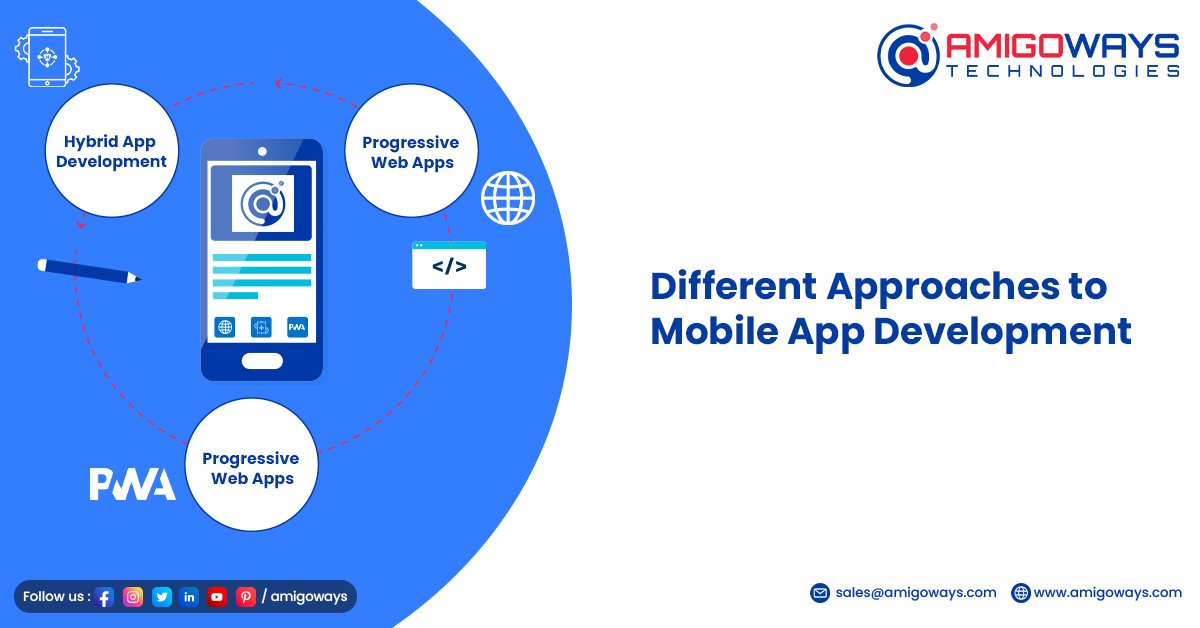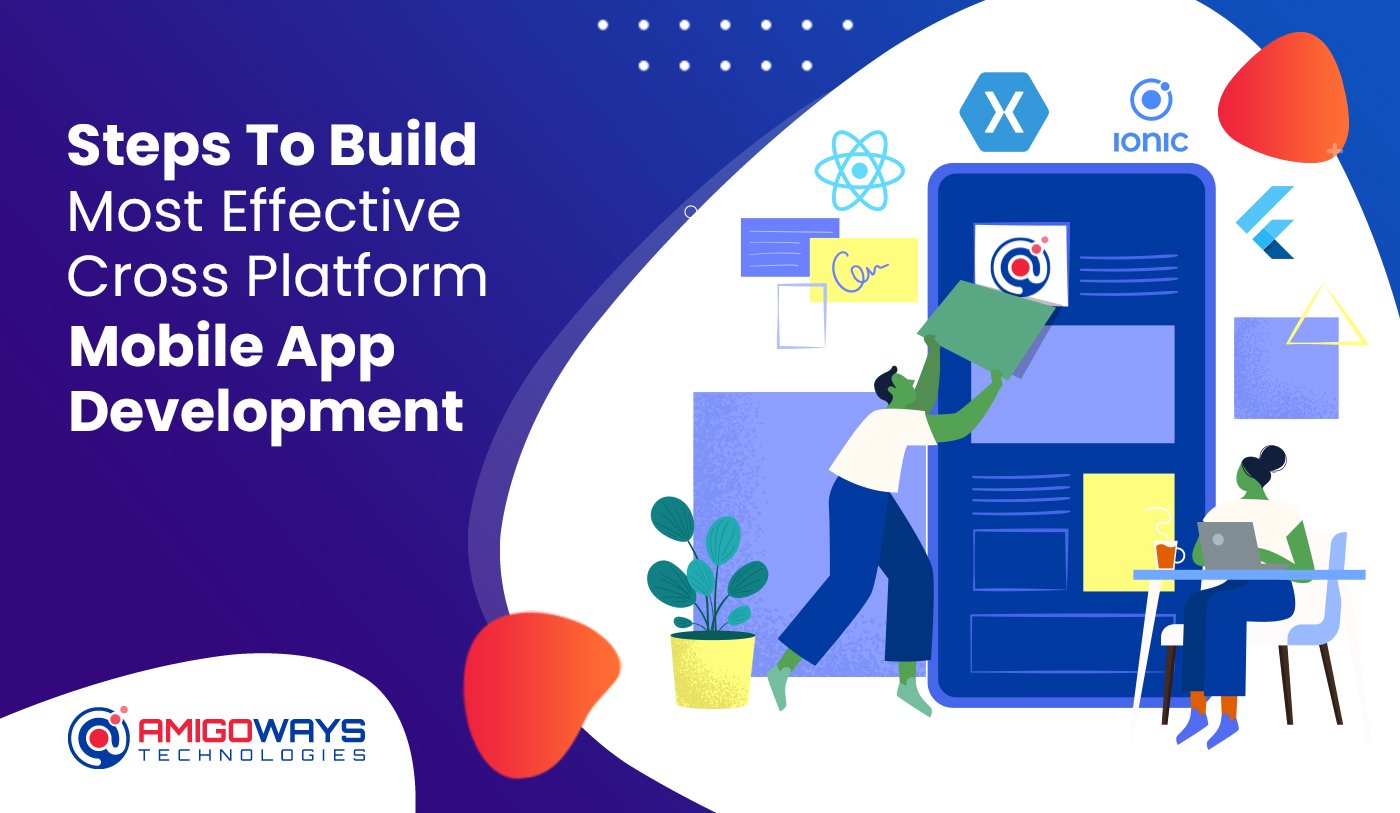Cross-platform mobile app development refers to the process of building mobile apps that can run on multiple operating systems, such as iOS, Android, and others. There are several approaches to cross-platform mobile app development, including.
Different approaches to mobile app development

- Hybrid app development: This involves building a single app that uses a combination of native and web technologies, such as HTML, CSS, and JavaScript. Hybrid apps can run on multiple platforms with a single codebase, and they can access native device features and APIs. Examples of hybrid app frameworks include React Native, Ionic, and Xamarin.
- Progressive web apps (PWA): These are web-based apps that can be installed on a device and run offline. PWAs offer a native app-like experience, and they can be installed on multiple platforms using the same codebase.
- Native app development: This involves building separate apps for each platform, using the native programming languages and tools for each platform. For example, an iOS app would be built using Swift or Objective-C, and an Android app would be built using Java or Kotlin.
How do you build a Cross platform mobile app development?
Now you know why you need Cross platform mobile app development. But how do you create one in the fastest and simplest way possible?
There are two routes you can take:
You have two options: either construct it from scratch or utilize a no-code marketplace from a marketplace builder. If you want a Quick Launch, I would suggest you go for a cross-platform marketplace. But whatever the choice is you need to follow the following steps,

Step 1: Market Research
Ideas may fail to meet market demands. Make sure a concept satisfies the needs of the intended audience before moving forward with it. Surveys should be conducted since the more information you have, the better your chances of success. Don’t forget to keep an eye on what your rivals are selling as well as how you may make your concept stand out from theirs.
Step 2: Express Your Idea
How valuable is your platform to its customers? How can this help them? Why would people choose to buy your offering? It’s crucial to keep these in mind to communicate your concept more effectively.
The key estimations of your platform should also be understood by everybody. Introduce value to the people by outlining their needs first, then design your Cross platform mobile app development based on those needs. This is what the Cross platform mobile app development suggests.
Step 3: Consider the Design Process & User Flow
Consider how consumers will utilize the platform while designing it. Starting with launching the platform and ending with the final procedure, such as ordering or receiving a delivery, you must view the platform from the user’s point of view. Furthermore, user flow is a crucial component since it guarantees you don’t overlook anything while keeping the future platform’s success and the needs of its users in mind.
The phases of the process must be defined before you can describe your user flow, and to do so, you must outline the actions required to accomplish the primary goal.
More important than features like locating and purchasing the goods, handling orders, and getting them, your attention should be on fundamental operations.
These are the objectives that the users of your platform will have. Once every step of the technique has been outlined properly, it is time to describe the characteristics of each stage.
Step 4: List the Project Features
Before you begin developing the Cross platform mobile app development, make a list of every feature you want to include in it. Once the development process is complete, compare the list to ensure everything is as it should be.
The features must then be prioritized after you have a list of parts for each stage. Consider the needs of your users and if you are providing them with helpful anything when deciding which features to prioritize.
After that, group the remaining features into three priority categories: high priority, medium priority, and low priority. Once all the features have been grouped, you can determine their scope for the initial platform release and begin developing a Cross platform mobile app development. You may also make a Cross platform mobile app development prototype if you want to preview how your future platform will appear.
Step 5: Build your Cross platform mobile app development
You may start to build Cross platform mobile app development once you’ve chosen the key features and discovered what the market demands are.
Remember that a prototype must still satisfy the demands of your consumer and is not of inferior quality to a finished platform. As a result, it must be simple to use, interesting, and appropriate for your users.
Now it’s the time to measure your success

Before measuring your software success, you must specify your presumptions and the Key Performance Indicators (KPIs) for your marketplace firm.
- What factors will decide whether your business is successful?
- What presumptions are you looking to support?
To reliably forecast a platform’s future success, there are numerous methods. Here are some of the most popular, reliable, and practical metrics for gauging a Cross platform mobile app development’s success:
Cross platform mobile app development is all about testing your concept, determining the best way to target your audience, and making sure that the product satisfies their needs. It will be much simpler to finish the platform and market it later if everything has been done correctly.
You may obtain feedback in a variety of ways:
- Interviews with potential clients.
- A/B testing.
- Landing pages for pre-orders.
- Single-purpose Cross platform mobile app developments
Negative reactions can help you avoid making the same mistakes again. To build your effective software with Amigoways.



